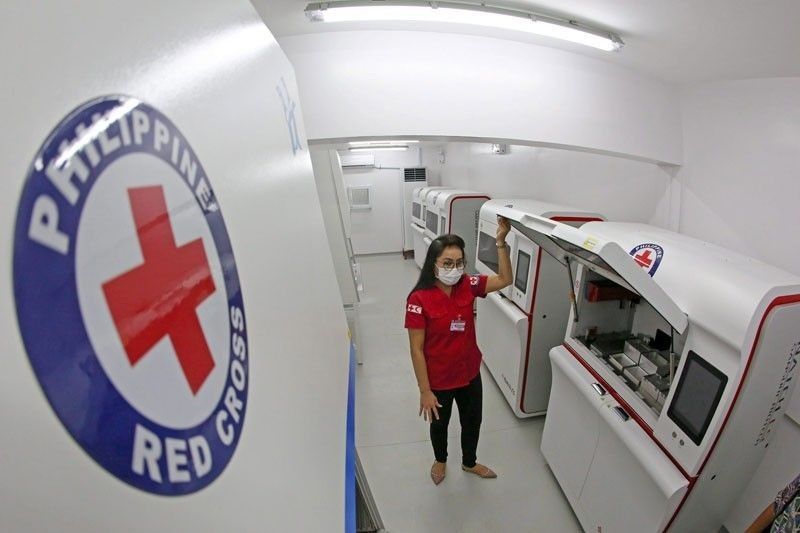Coronavirus testing hits over 3-month low on Red Cross exit

MANILA, Philippines — Coronavirus testing slumped to its lowest level in over 3 months after the Philippine Red Cross halted its own diagnosis, reflecting a dearth on public investments to boost the country’s testing abilities and putting at risk the overall crisis response.
Total samples tested for the past 4 days have dipped below the 30,000-mark government has targeted to do everyday, health department data showed. As a consequence, fewer people were likewise tested.
In October 18 alone, 4 days since Red Cross stopped testing, samples processed dropped to just 18,810, the lowest since July 12. By number of people, 17,177 individuals were tested that day, also the lowest since July 12.
As of October 20, testing have slightly picked up, albeit still below government targets, at 24,123 people tested.
“We recognize that fact, we can’t deny that the Philippine Red Cross contributes a lot to our daily outputs of our laboratories,” Health Undersecretary Maria Rosario Vergeire said partly in Filipino in a briefing on Thursday.
That testing is slowing down just when the economy is opening up further is worrisome. Back in February, ahead of the deadly virus spiraling into a pandemic, government flaunted the Philippines’ low case tally as a success, only to be proven wrong later on as more testing centers were established and monitoring was improved.

Months passed, and the Duterte administration had committed to varying testing targets from 30,000 tests to 50,000 a day from April to June. Those targets were not met until recently, when testing breached 35,000 in some days. But as it appeared, all those gains were largely due to the Red Cross stepping up its game, not the government testing more.
“Testing is a cornerstone in reopening the economy. It’s badly needed,” Tony Leachon, former adviser to the government coronavirus task force, said in a text message. “We can't fall behind our target goal.”
“The other … molecular labs should step up to accommodate the slack left behind by PRC,” Leachon added.
Falling behind
What’s more, Red Cross quitting tests was also due to government. Presidential spokesperson Harry Roque had said the state would pay up half of over P900 million in the ballooning debt of Philippine Health Insurance Corp. with Red Cross for outsourcing tests. That said, it remains unclear when the health group would resume testing.
Before it decided to stop tests charged to PhilHealth, Red Cross’ 10 labs screened 8,000 to 12,000 samples a day, accounting for 26% to 40% of daily testing capacity.
For now, Vergeire said 11 government facilities had been identified to try to fill the testing gap left by Red Cross. In addition, she said nine private institutions had volunteered to take up additional samples for diagnosis.
But ultimately, Vergeire admitted that government would highly depend on private institutions in terms of testing. “They have the resources, they have the capability to establish quick and fast laboratories,” she said.
In April, the World Bank lent the Philippines $100 million, mostly going to improving testing capabilities. This was topped up by another $1.2 billion in July, both forming part of the $9.9 billion borrowed as of October 2 to fund crisis contingency programs.
Meanwhile, from having just one testing center at the Research Institute for Tropical Medicine last February, government now has 128 operating testing centers, but their capacity to conduct tests differ widely among each other.
Vergeire said the government would construct more labs. “We are on to that direction of establishing not just one or two, we would want that all of our regions would have these big laboratories, these subnational laboratories,” she said.
“Hopefully in the coming years we would have something like this in every region,” she added.
- Latest
- Trending

























